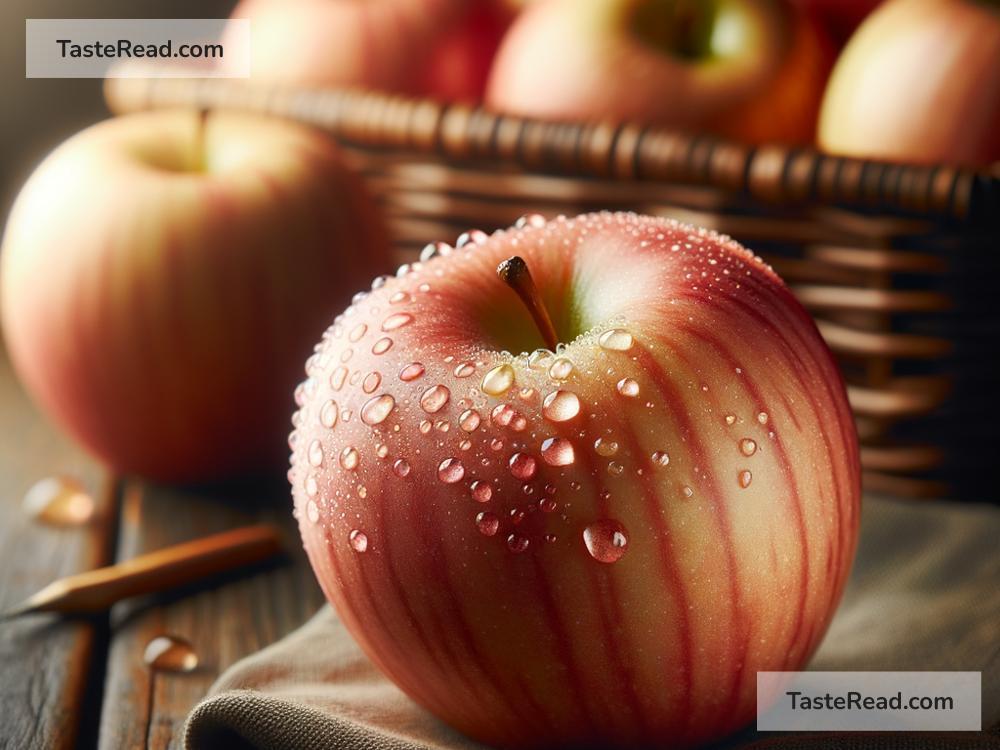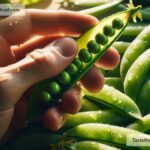The Science Behind the Crunchiness of Apples: A Bite-Sized Explanation
Have you ever bitten into a fresh apple and felt that satisfying crunch? It’s one of nature’s delightful experiences, and it’s no wonder people love apples so much! But have you ever wondered why apples are crunchy in the first place? Is it magic? Is it a secret recipe from nature? The answer is science! Let’s peel back the layers and explore the fascinating world of crunchy apples.
What Makes an Apple Crunchy?
The crunchiness of an apple comes from its unique structure and cells. When you take a bite, you’re breaking open tiny, tightly packed pockets inside the apple. These pockets are filled with juice, air, and other substances that make up the apple’s flesh. The process of biting into an apple engages your teeth and jaw in a tiny battle against its structure—and that satisfying sound and feeling you get is the result of breaking through the fruit’s crisp cell walls.
Apples Are Made of Millions of Cells
Think of an apple like a big puzzle made of millions of tiny pieces called plant cells. These cells are what give the apple its texture, shape, and crunch. Plant cells in fresh, crunchy apples are like balloons—firm and full of water. When you bite into an apple, you’re crushing and popping these water-filled cells, releasing the juices inside. This process creates the “crunch” sound and sensation you love.
Each cell is surrounded by a cell wall, which helps the apple maintain its structure and firmness. In a crunchy apple, these walls are strong and rigid, allowing the fruit to retain its texture. If the cell walls weaken, the apple becomes soft and loses its crunchiness.
Water and Crunchiness Are Connected
One of the most important factors in apple crunchiness is water. Water makes up about 85% of an apple’s total weight. When an apple is fresh and properly hydrated, its plant cells stay full and plump, like balloons filled with water. This fullness gives apples their crisp and crunchy texture.
But what happens if an apple loses water? Over time, apples can begin to dry out, especially if they’re stored for too long or in improper conditions. When an apple dehydrates, its cells lose some of their water content, becoming shriveled and less sturdy. This is why older apples or poorly stored apples often feel soft and lack crunch when you bite into them. Keeping apples in a cool, humid place can help preserve their juiciness—and their crunch!
The Role of Pectin: Nature’s Glue
Another key reason behind apple crunchiness is a substance called pectin. Pectin is a type of natural carbohydrate found in apples. You can think of pectin as the glue that helps hold apple cells together. It’s found between the cell walls and helps the fruit stay firm and structured.
When apples ripen, enzymes (special proteins that help chemical reactions happen) in the fruit begin to break down pectin. As pectin breaks down, the apple becomes softer and less crunchy. This is why very ripe apples are often mushy or mealy—they’ve lost much of their natural “glue.” On the other hand, less ripe apples have firmer pectin, which contributes to their crunchy texture.
Air Pockets Add to the Fun
Another small but important detail in apple crunchiness is the presence of tiny air pockets between the water-filled cells. These air pockets play an important role in the apple’s bite. When you sink your teeth into an apple, the combination of breaking cell walls and collapsing air pockets creates that satisfying sound we associate with crunchy foods. If an apple has fewer air pockets (like in older or overripe apples), the crunch is less noticeable.
Why Do Some Apples Crunch More Than Others?
Have you ever noticed that some apples are crunchier than others? This difference depends on the variety of apple and its growing conditions. Apples come in hundreds of different types, each with its own unique flavor, texture, and crunch factor. Some apples, like Honeycrisp or Fuji, are especially known for their crisp texture. Their cells are larger and filled with more water, creating a louder, more satisfying crunch when you bite into them.
Other apples, like Red Delicious or Gala, can be softer because of their smaller cells or lower water content. The growing environment—like soil quality, temperature, and the amount of water the tree receives—can also affect how crunchy an apple is when it’s picked.
How to Pick a Crunchy Apple
Want to make sure you’re eating the crunchiest apple possible? Here are some simple tips:
- Feel the apple: Look for apples that feel firm when you squeeze them gently.
- Look for shiny skin: Fresh, crunchy apples often have smooth, glossy skin.
- Choose the right variety: Apples like Honeycrisp, Fuji, and Granny Smith are known for their crunchiness.
- Store it properly: Keep apples in a cool and humid place, like in your refrigerator’s crisper drawer.
Crunch Is More Than Just Texture
The crunchiness of an apple isn’t just a fun eating experience—it also signals freshness and quality. When you bite into a crunchy apple, you’re enjoying a fruit at its prime, full of juiciness and nutrients. So next time you grab an apple, you can appreciate the science behind that satisfying crunch—and take a moment to thank nature’s brilliant design!
Conclusion
Apples have been loved for centuries, and their crunch is one of the main reasons why. Thanks to their water-filled cells, firm pectin, and tiny air pockets, biting into a fresh apple is an experience that’s both delicious and satisfying. So the next time you hear that crisp sound, remember: science makes it possible!


